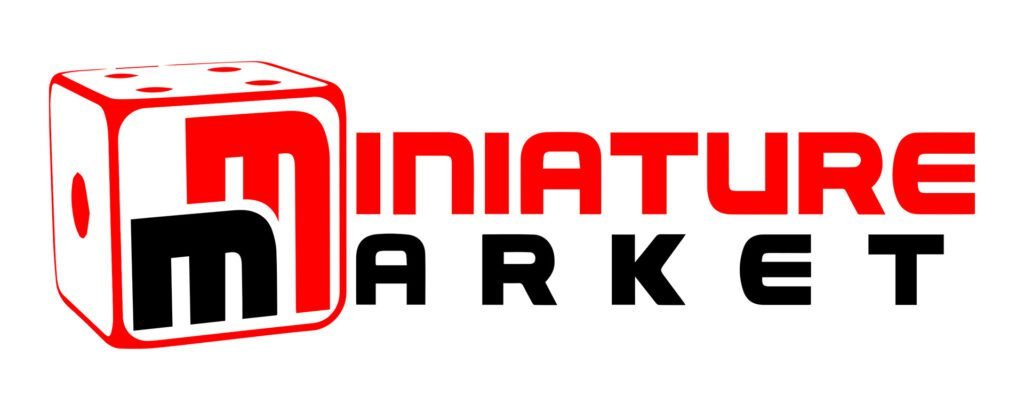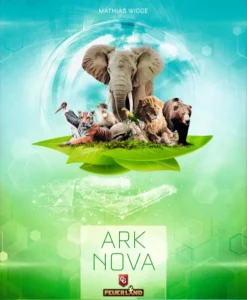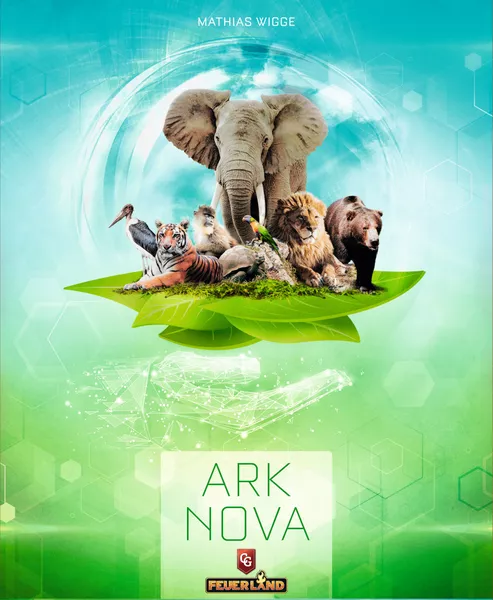
Today we’re diving into Ark Nova. This is a board game from Capstone Games, designed by Mathias Wigge, where you’ll step into the world of modern zoo management & conservation. So, let’s break it down – what it is, what’s good, what’s bad, & if you should pick it up. Let’s get into it.
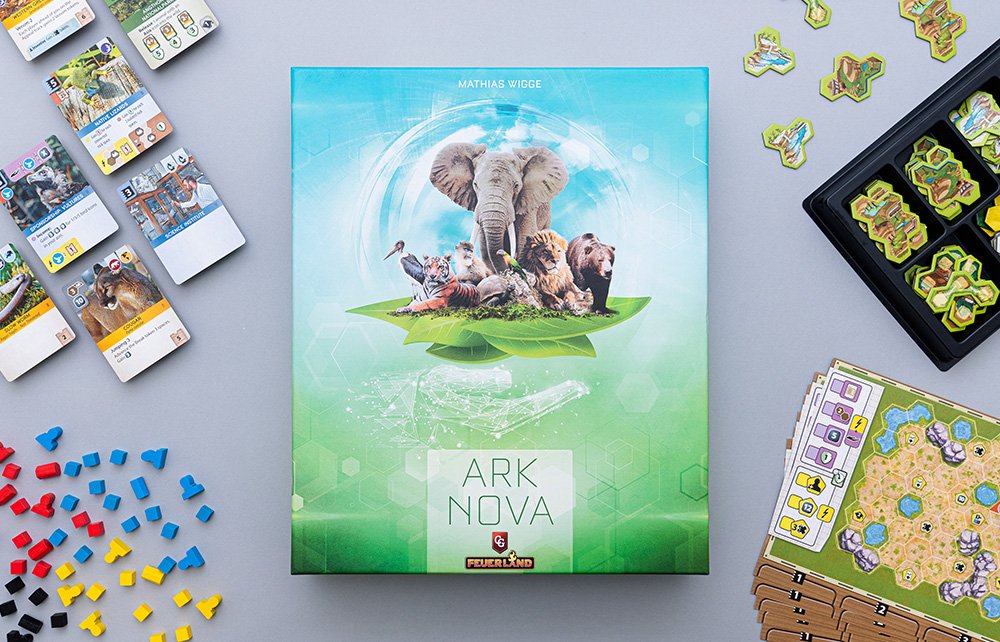
What It Is
Ark Nova is a medium-to-heavyweight strategy game that tasks players with building & managing their own zoo. You’ll be constructing enclosures, attracting animals, & working towards various conservation efforts, all while competing with other players to create the most successful zoo. The game features a mix of worker placement, card drafting, & engine building, offering a deep, strategic experience.
Throughout the game, you’ll be managing resources, expanding your zoo, & balancing the needs of your animals to score points. The more you build & optimize, the more points you can rack up by meeting the criteria for animal habitats & conservation goals. Ark Nova plays 2 to 4 players, takes about 90 to 150 minutes, & has high replayability thanks to its varied card deck & modular setup.
Check Out These Recent Board Game Sales
- Board Game Sale: Disney Villainous 25% Off!
- Board Game Sale: Marvel: Crisis Protocol Core Set 30% Off!
- Board Game Sale: 7 Wonders Available for 17% Off!
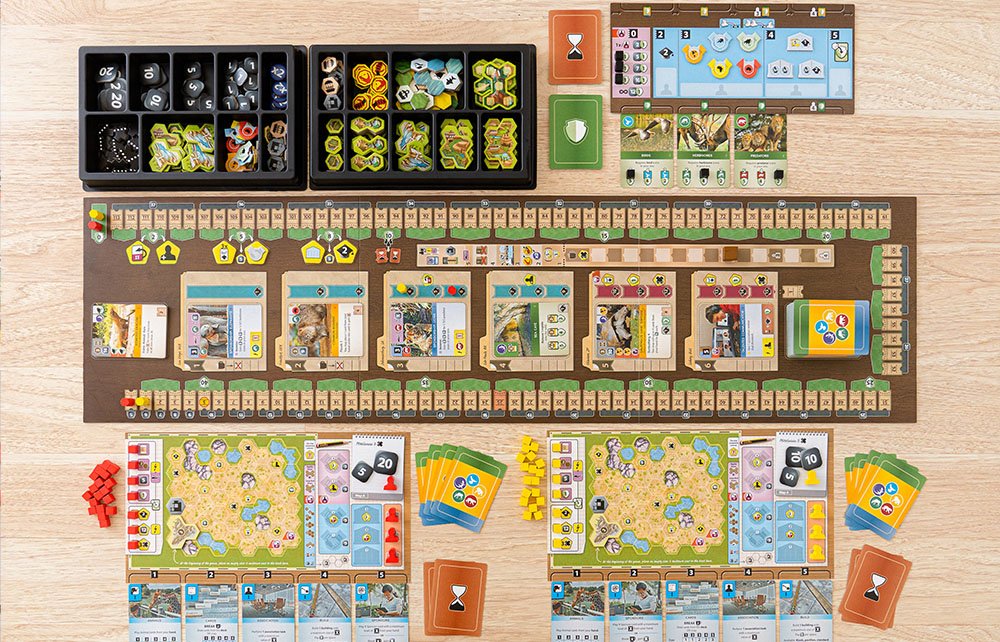
Gameplay Overview
In Ark Nova, players aim to construct the most successful scientifically engineered zoo by balancing appeal & conservation points. Each player’s zoo earns these points through various in-game actions, & the player with the highest combination when the game ends is the winner. The game is designed for one to four players, though the solo mode won’t be covered here. The video also skips a detailed breakdown of every card & icon, as a helpful glossary is included in the game. With these basics in mind, let’s explore how the game is played.
Setting up Ark Nova involves placing the game board at the center of the table, along with organizers filled with tokens. Players arrange zoo cards, conservation cards, & bonus tiles on the board, leaving certain spaces unused in a two-player game. Each player then chooses a zoo map, preferably map A for the first game, & completes any initial setup specific to their map. After distributing starting money & action cubes, players determine the first player, typically by whoever owns the most animals, & place counters on the three main tracks: conservation, reputation, & appeal.
Each round, players choose one of five possible actions, represented by action cards beneath their zoo map. These actions include playing animal cards, drawing zoo cards, building enclosures, playing sponsor cards, or performing association tasks. The strength of each action depends on the card’s position on the player’s board, ranging from one to five. After an action is taken, the card moves to the far left, reducing its strength, while the others shift to the right, increasing their strength.
Building enclosures is essential for expanding a player’s zoo. Buildings like enclosures, pavilions, kiosks, or petting zoos are constructed based on the strength of the build action. For example, if the build action card is under the four-space, a player can construct any building up to four spaces in size. Placement rules require buildings to be adjacent to others, & they cannot overlap certain spaces until the build action card is upgraded. Upgraded cards also allow larger buildings, like aviaries & reptile houses, which can house multiple animals of the same type.
Drawing cards is another core action, allowing players to draw zoo cards from the deck or the display based on the action card’s strength. Higher strength levels also enable the player to “snap” a specific card from the display. Cards in the display range from animal cards, sponsor cards, to conservation project cards. As players advance through the game, upgrading action cards enables them to draw more cards or gain better control over their hand, improving their zoo’s strategy.
Playing animal cards is crucial for earning appeal points. Each animal card has a cost & enclosure requirement, as well as various effects & bonuses. For example, a reindeer might cost 12 coins & require a three-space enclosure, while providing five appeal points when played. Some animals, like birds, can be housed in special enclosures like aviaries, which provide more efficient space usage. Upgrading the animal action card enables players to play multiple animal cards or play them directly from the display, broadening their options.
Sponsor cards introduce specialists & unique structures to enhance the zoo. These cards often offer one-time, ongoing, or end-of-game abilities. For example, the Expert on Europe card grants points for European animals & allows the player to build enclosures for free. Sponsor cards can also influence the break system, which is triggered when the break token reaches the end of the track, forcing a reset of certain game elements. Upgrading the sponsor’s action allows more powerful plays & strategic management of the break token.
With each player balancing the different types of actions, building enclosures, playing animals, & supporting conservation projects, the game continues until the break or other game-end conditions are triggered. Through careful planning & the efficient use of action cards, players develop their zoos into powerful engines of appeal & conservation, with the ultimate goal of creating the best zoo in Ark Nova.

The Components
The components of Ark Nova are top-notch. The game features beautifully illustrated cards depicting various animal species, enclosures, & conservation projects. Each animal card is accompanied by real-world information about the species, adding an educational layer to the gameplay. The card artwork is vibrant, with clear iconography that makes it easy to understand the game’s various effects & abilities.
The game board is well-designed, with player boards representing individual zoos, complete with spots for enclosures & facilities. The quality of the components, from the sturdy cardboard pieces to the wooden cubes representing zoo staff, really helps immerse you in the theme of managing a modern zoo. There’s also a nice variety of animal tokens & habitats, adding to the overall aesthetic.
The Good
Ark Nova shines in its strategic depth & replayability. The combination of card drafting, action selection, & engine-building mechanics creates a game that’s rich with possibilities. No two games feel the same, as the order in which you acquire animals & Sponsor cards can drastically change your strategy. The variety in cards, the modular setup, & the different conservation goals provide players with a unique experience every time they play.
The theme is also wonderfully integrated. If you’re someone who enjoys games with a strong thematic tie-in, Ark Nova does a fantastic job of making you feel like you’re running a real zoo. The cards not only serve as game pieces but also offer educational tidbits, making the process of acquiring animals & meeting conservation goals feel purposeful. It’s not just about points – it’s about building a thriving, balanced ecosystem in your zoo, which adds to the game’s charm.
Additionally, the solo mode is well-done, allowing for a challenging & engaging experience when you don’t have a group to play with. Competing against the AI with customizable difficulty levels is a nice touch that extends the game’s appeal for solo gamers.
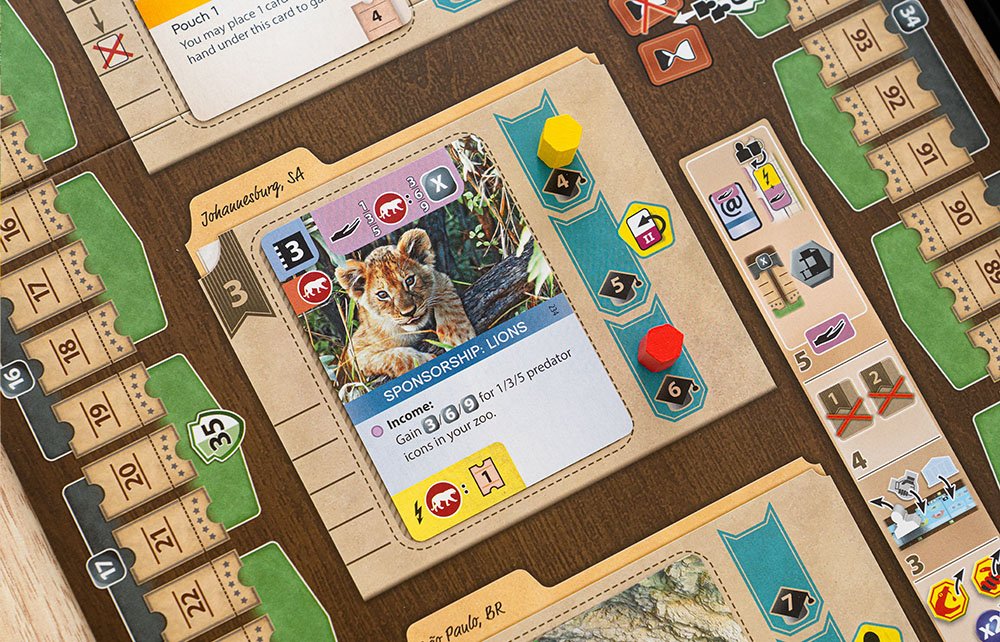
The Bad
While Ark Nova has a lot going for it, there are some drawbacks to consider. First & foremost is the game’s complexity. The rulebook is dense, & it can take a while to get up to speed with all the different actions, synergies, & scoring mechanisms. The learning curve is steep, which might turn off more casual gamers or those who prefer lighter fare. Even experienced gamers may need a few plays to fully grasp how to optimize their strategy.
Another issue is the game length. At 90 to 150 minutes, Ark Nova is not a short game, & with more players, it can easily hit the higher end of that range. Turns can be long as players weigh their options, which can lead to some downtime, especially if you’re in a slower group. The long playtime combined with the game’s complexity might make it harder to get to the table regularly, particularly for groups who prefer quicker games.
The randomness of the card draws can also be frustrating. Since you’re heavily reliant on drawing cards that fit your strategy, there are times when the cards you need just don’t show up, & you’re forced to adapt in ways that may feel suboptimal. This can make some games feel more luck-dependent than others, despite the overall strategic depth.

The Verdict
Ark Nova is a fantastic game for players who enjoy deep strategy & don’t mind investing time in learning & mastering a complex system. The combination of worker placement, card drafting, & engine-building mechanics offers a rewarding experience that encourages careful planning & long-term strategy. The theme of zoo management & conservation is not only engaging but also brings an educational aspect to the game, making it stand out in a sea of heavier euro-style games.
That being said, this game is not for everyone. The steep learning curve & long playtime might be a turnoff for more casual gamers or groups that prefer faster, simpler games. If you don’t enjoy games with a lot of moving parts & multiple layers of strategy, Ark Nova might feel overwhelming. However, for those who thrive on complex decision-making & strategic depth, this game offers endless replayability & rewarding gameplay.

Final Thoughts
Ark Nova is one of those games that really sticks with you, both in a good way & in ways that can make you scratch your head. The mix of mechanics is ambitious, to say the least. At first, it’s a bit like trying to juggle too many things at once, but once it clicks, it starts to feel rewarding. That action queue system? It’s brilliant. I love how the strength of your actions depends on where they are in the lineup, making you think ahead & plan carefully. It’s a constant push & pull, which makes each turn feel important.
That being said, this game isn’t without some bumps. The card draw system, while adding a layer of excitement, can also make things frustrating. You can have everything planned out, but if the cards don’t fall your way, you’re stuck. It’s not always fun when a single lucky draw can decide a game, especially after you’ve been working on your strategy for hours. That kind of randomness can make it hard to take seriously from a competitive standpoint.
The pacing of Ark Nova is also something to think about. The game flows without strict rounds, which can be great for flexibility but can also drag out the experience. If you’re into long, slow-burning strategy games, you’ll love it. But if you’re looking for something quicker or more structured, you might find yourself checking the clock. Personally, I enjoy the depth, but it’s definitely a commitment.
On the plus side, the production quality is fantastic. The artwork is really nice, even if some of the cards have a slightly odd filter on them. The animals look great, & the components are solid. & if you’re into solo play, it’s worth mentioning that the solo mode is surprisingly smooth & easy to set up, which isn’t always the case with games this big.
At the end of the day, Ark Nova is one of those games that will either grab you or leave you feeling a bit conflicted. There’s a lot to love here, from the intricate strategy to the feeling of building something unique in your zoo. But there’s also enough randomness & length to give pause. It’s definitely earned its spot on my shelf, even if it’s not going to be the game I reach for every time. If you’re a fan of deep, strategy-heavy games & don’t mind a bit of chaos along the way, Ark Nova is definitely worth a look.
Purchase Options


At no extra cost to you, The Board Game Site may receive revenue from affiliate and advertising partnerships for sharing this content and from purchases through links.



